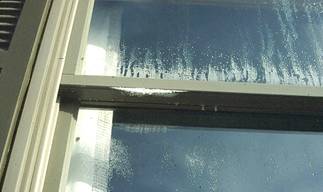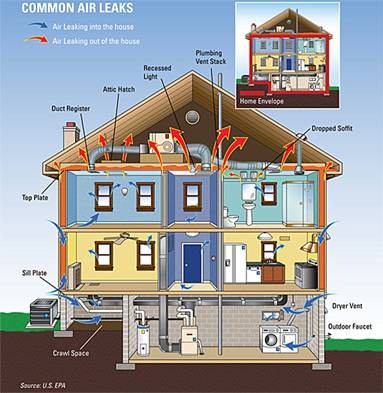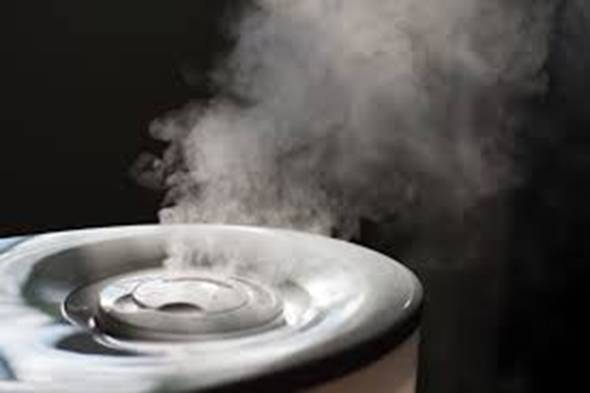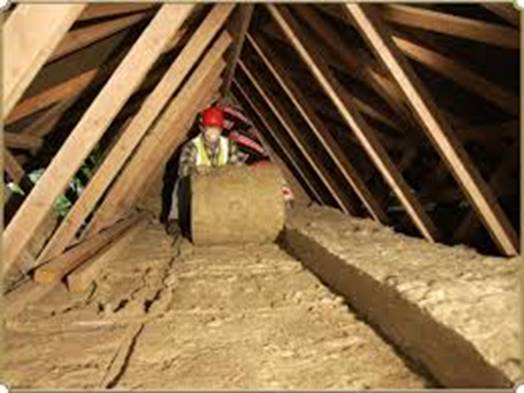Adjust your Home’s Humidity Level with Every Season

Rain Season is Coming…Get Ready!
First of all, it is important to know that humidity is always present in the air, in a certain percentage, which however, needs to be kept at a specific level, depending on the season and outside weather. You will notice that the weather has great influence on the moisture present within your home and should thus be properly adjusted. You must know that, although it does not have to as evident, but you will notice every time the humidity level within your home drops below or rises over the optimal level. Basically, when the humidity drops under 15%, it can result in sore throat or dry skin, while when the level rises over 50%, the air will become sticky, moist and raise the inner temperature. This can all have effect not only to your health but can also have drastic consequences to your home, if not dealt properly. Another important fact is that this will all depend on the weather season, since the moisture level within your home will depend on the temperature outside as well as the amount of rainfall, why you must adjust your home’s humidity level with every season and we will show you how.

First of all, let’s consider some basic ways that moisture can get in or escape your home and thus affect the level of humidity within your home. The first obvious way refers to the amount of rainfall outside. Namely, the rainfall can easily get into your home through a leaky roof, poorly insulated walls or by building and travelling up through a crawlspace or uninsulated basement. This means that there is a greater risk of moisture reaching your home during rainfall seasons (such as winter and fall). Another way that the humidity level of the indoor air can be affected is through every day activities such as cooking, bathing, doing the laundry, even breathing. Here, you will notice that certain heating systems (such as propane or natural gas) will generate some moisture, so if it is colder outside and the heating system is more invasive, you will need to somehow lower the moisture level.

Air movement within your home can also affect the moisture level, since it can transfer the air with higher humidity from one room to another and thus affect the overall level of humidity within your home. Potential air leaks can be of great influence here, why these need to be properly taken care off. You will notice that the moisture does not have to be evenly distributed throughout your home, but some rooms and areas can be under the greater influence of moisture and condensation unlike others. This will depend on the location of the room (does it face north or south), whether it is located above the ground or some crawlspace or basement space etc. Here, the hotter, containing more humidity will be transferred to the air that is dryer and has lower humidity content. You will also notice that the moisture can travel up from a moldy and moist basement to the upper levels of your home, just like a plant sends water from the root through the leaves to the rest of the plant. This can also affect the level of humidity within your home. Finally, even during construction, building elements can store certain amount of moisture within and if the moisture level is kept at a study level and under control, affecting the drying times to be optimal and allow the excessive moisture to dry out, thus leaving the interior unaffected.
Which Humidity Control Measure for Which Season?Now, as upper mentioned, you will need to adjust the humidity control measures with the weather season, basically depending on the temperature outside and the amount of rainfall. The math is pretty simple – if it is dry and hot outside (during summertime) you will have to somehow increase the level of moisture within your home, while when it is wet and cold outside, you will have to put the level of moisture under control and decrease it. A simple way of controlling your home’s humidity levels is by using humidifiers and dehumidifiers that can add some moisture or take some out, if necessary. Basically, the dehumidifier will extract the excessive moisture from the air thus keeping it on a stable level during rainy seasons such as winter, late fall and early spring. On the other hand, humidifier will add some moisture to the air when it is dry and hot outside. Whenever you have problems with sore throat or with friction shocks, it is time to turn the humidifier on. However, you need to be careful and use it only in areas and rooms that actually have the problem with moisture deficiency since you do not want to add humidity to rooms that already have problem with it.

Another quite simple way to control the level of humidity within your home is by making use of plants that can find a way to remove the excessive moisture from the air and thus keep it a study level all year round. You could get a cactus which is a simple yet great solution or some type of fern that is low on maintenance since it does not require a lot of sunshine and light. Finally, you can go a long way by simply opening your windows and ventilating the inner space during fall or spring when the outer temperature is at a moderate level and a cross breeze can remove old, heavy air and let fresh one in.
Now, as we said before, too much moisture within your home can not only affect your health and everyday comfort, but also the stability and appearance of your home. This means that putting humidity levels under control is not important only for the quality of indoor air but also the stability of your wall, floors and ceilings. Basically, what happens is the moisture coming from different sources, some of them herewith mentioned, and build up behind the walls, under the floors or up in the attic. It is possible that you will notice it when it is already too late (when you see big watermarks on your wallpaper, for example) why you need a preventive intervention. A very simple yet effective way of controlling humidity levels within your construction elements is through proper insulation upgraded with adequate vapour control layer. Namely, although there are many insulation materials that are made as moisture resistant, they also need proper protection that can be found in vapour resistant layers that are installed on top of the insulation material, keeping it protected from the excessive moisture building up, coming from both outside and inside your home. This is why it is important to control the level of moisture within your home by applying upper mentioned simple tricks, which can all contribute to adding protection to the construction elements as well.

Insulation Shop offers a wide range of energy efficient UK insulation products. Send your quote enquiries to info@insulationshop.co or order directly from our insulation online shop.



































































































































